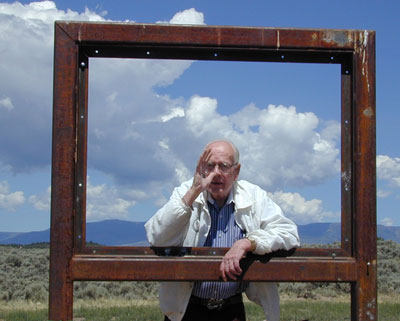
CHARLES A. REPENNING—A DEDICATION
We met Rep at different times in his life and ours, and we knew him in different capacities. LHT knew him best as a friend, but respected him for the vertebrate paleontologist and geologist he was. LLJ knew him best as a mentor, friend, and sometime antagonist. CJB knew him as a mentor, friend, collaborator, and constant antagonist and correspondent for over a decade. He challenged each of us in his own unique style, but we all developed a great respect for him as an individual and as a scientist.
His untimely and violent death shocked and saddened us. We grappled with a deep sense of personal loss as well as the contemplation of the loss to our science of one of its great practitioners. Our collective decision to prepare this volume was motivated not only as a way to honor his many contributions to our field, but also as a way to assuage our depression and anger at being so suddenly deprived of his company.
 Rep is honored here for
his long and distinguished service to our science. Many of our colleagues knew
him through only one of his research programs, and may be surprised to learn of
his diverse interests and expertise. For some, he was a stratigrapher and
geologist who revealed the geology of the Navajo and Hopi Reservations. For
others, he was an expert on the evolution, phylogeny, and functional morphology
of seals and sea lions. Still others knew him through his work on the evolution,
biostratigraphy, and biochronology of microtine rodents (now almost universally
known as arvicolines). All of these are topics on which he published
extensively. Somewhat surprisingly, and certainly to his credit, he is also
still known as a specialist on shrews. He published only two papers on shrews,
but one was a monographic assessment of higher-level phylogeny that resulted
from his M.S. thesis research and is still influential. His contributions in all
these areas provide a lasting source of data, ideas, hypotheses, proposals,
speculations, and insights that will stimulate and challenge future scientists
for generations. (Photo: Rep being Rep near
Gypsum, Colorado, July, 2001. Photo by Sheila Stephens. Jeanne Forsberg
Collection.)
Rep is honored here for
his long and distinguished service to our science. Many of our colleagues knew
him through only one of his research programs, and may be surprised to learn of
his diverse interests and expertise. For some, he was a stratigrapher and
geologist who revealed the geology of the Navajo and Hopi Reservations. For
others, he was an expert on the evolution, phylogeny, and functional morphology
of seals and sea lions. Still others knew him through his work on the evolution,
biostratigraphy, and biochronology of microtine rodents (now almost universally
known as arvicolines). All of these are topics on which he published
extensively. Somewhat surprisingly, and certainly to his credit, he is also
still known as a specialist on shrews. He published only two papers on shrews,
but one was a monographic assessment of higher-level phylogeny that resulted
from his M.S. thesis research and is still influential. His contributions in all
these areas provide a lasting source of data, ideas, hypotheses, proposals,
speculations, and insights that will stimulate and challenge future scientists
for generations. (Photo: Rep being Rep near
Gypsum, Colorado, July, 2001. Photo by Sheila Stephens. Jeanne Forsberg
Collection.)
In ways that he often did not or could not know he had a nurturing influence on many students entering the field of vertebrate paleontology. Indeed, many of the authors of the papers included here never had the opportunity to tell him of his impact on them or of their appreciation of his work. The impacts of his influence continue to this day in other ways as well. As an example, Rep was an Honorary Member of the Society of Vertebrate Paleontology, and although he was pleased and honored with the recognition, he was concerned about procedural aspects of the award. Through the simple expedient of sending a rather pointed letter he had an impact on how the Society now recognizes its Honorary Members.
We appreciate the efforts of our colleagues who prepared the papers that make this volume a worthy memorial to his contributions to our science. We know he would not be happy with us for the time it took us to complete this project. However, our memories of his personal style remain sufficiently clear that our ears are ringing with the biting but witty criticisms we know he would offer if only he were here to do so. We miss him, and hope that this volume will help to provide future generations with some insight into his remarkable life and career.